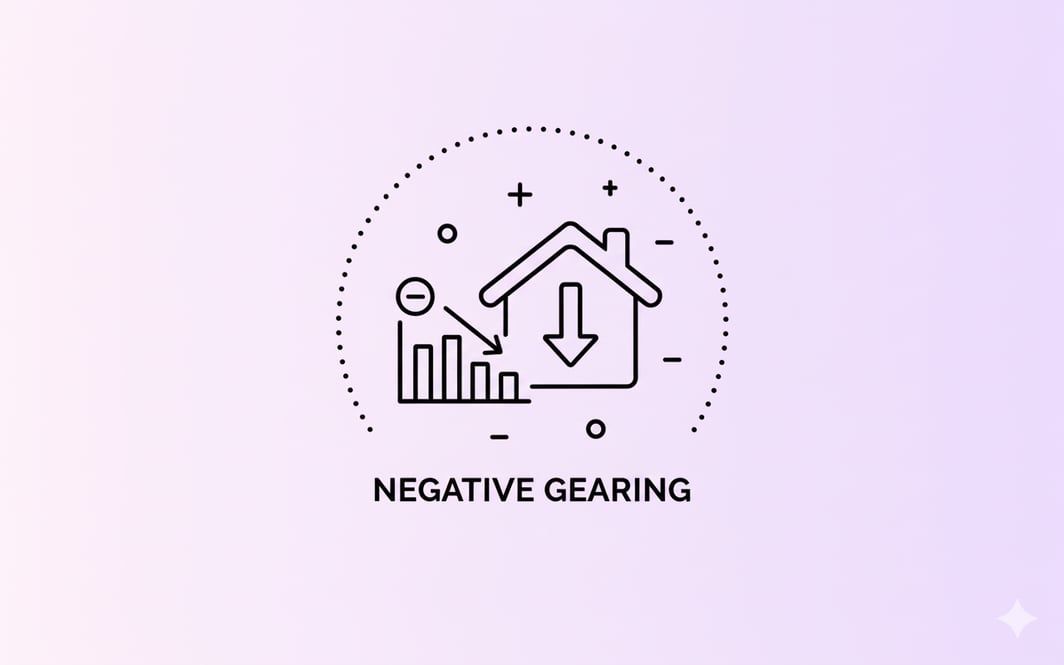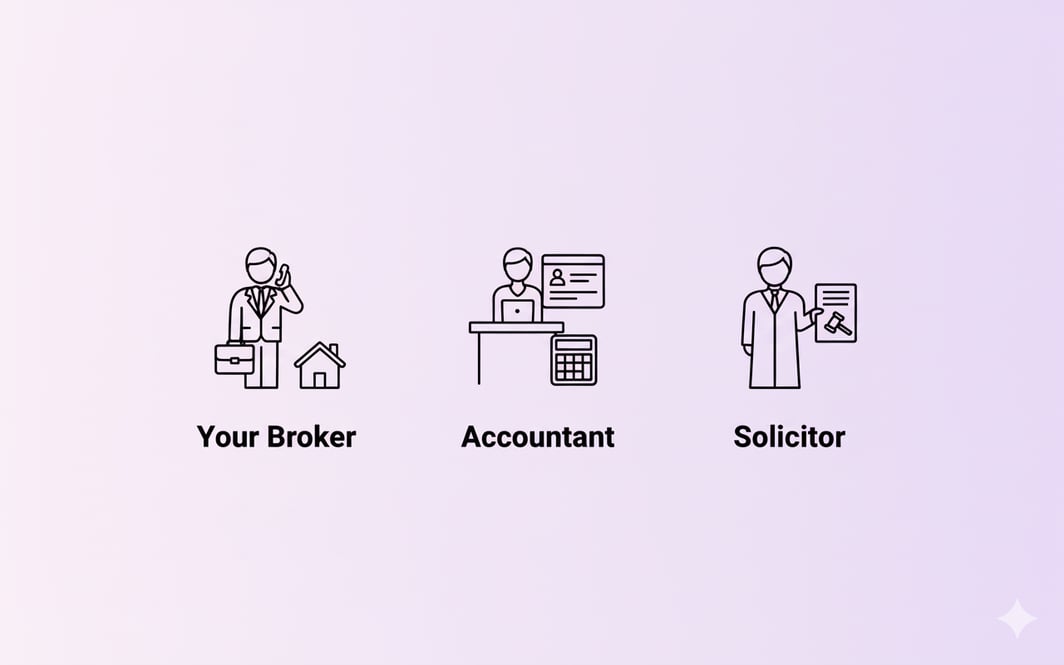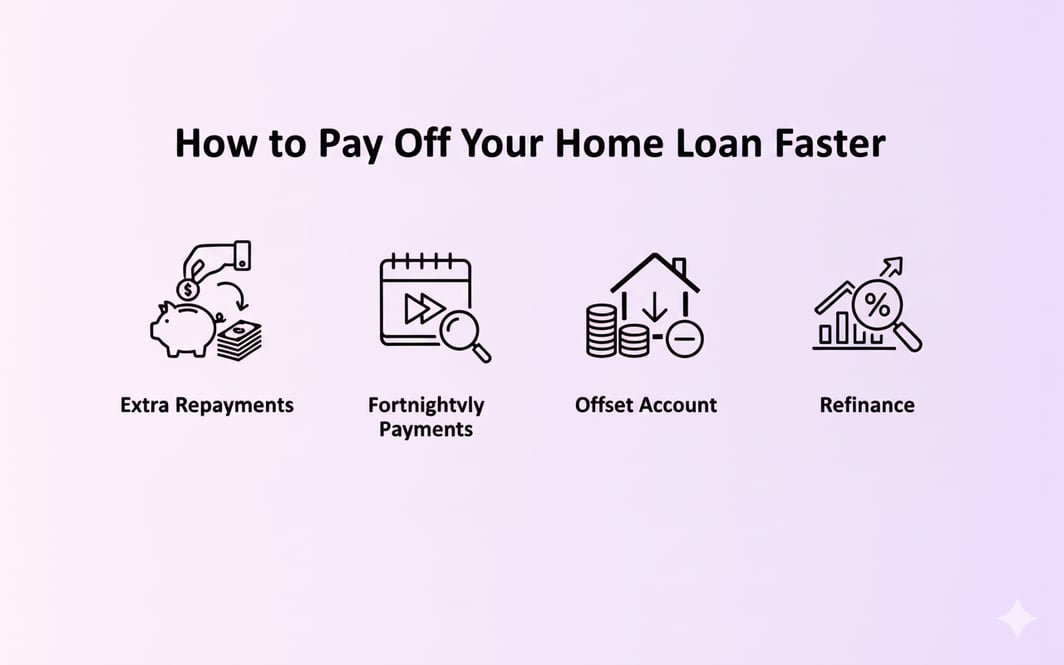Negative gearing is a familiar term in Australia, often sparking strong opinions. Some see it as a smart way to build wealth, while others believe it contributes to the housing affordability crisis. With approximately 2.2 million Australians using this strategy, it plays a significant role in the Australian economy.
But what is it, really? And for an aspiring or experienced investor, how do you cut through the noise to decide if it’s right for you?
This guide goes beyond the basics and is designed for serious investors. We will explain how negative gearing works in Australia, highlight the main tax benefits, discuss the real risks, and share a strategic approach to choosing the right property. For now, we’ll focus on practical strategies rather than the political debate.
The Nuts and Bolts: How Negative Gearing Works in Australia
At its heart, negative gearing is a simple concept. An investment property is 'negatively geared' when the costs of owning it—like mortgage interest, council rates, and maintenance—are greater than the rental income it generates. You are, in effect, making a loss on paper.
The key tax benefit comes next. The Australian Taxation Office (ATO) lets you deduct this net loss from your other taxable income, like your salary. This lowers your total taxable income, so you pay less tax.
Let's run the numbers with a practical example.
Imagine an investor, let's call her Chloe. She earns a salary of $120,000 per year. She buys an investment property that generates $25,000 per year in rent. However, her deductible expenses for the year look like this:
- Mortgage Interest: $30,000
- Council & Water Rates: $2,500
- Insurance: $1,500
- Repairs & Maintenance: $1,000
- Property Management Fees: $2,000
Total Expenses: $37,000 Rental Income: $25,000 Net Rental Loss: $12,000
If Chloe did not have the investment property, her taxable income would be $120,000. Since her property is negatively geared, she can deduct the $12,000 loss, reducing her taxable income to $108,000. Depending on her tax rate, this could mean a tax refund of several thousand dollars. This annual refund helps investors manage the cash flow gap from owning the property.
What Can You Actually Claim? A Look at Property Tax Deductions
The list of eligible property tax deductions is extensive, but the ATO is strict about what qualifies. The golden rule is that the expense must relate directly to earning your rental income. Common deductions include:
- Loan Interest: The interest portion of your mortgage repayments is usually the largest deduction.
- Council and Water Rates: Standard holding costs.
- Land Tax: A state-based tax that is deductible.
- Strata and Body Corporate Fees: For units, townhouses, and apartments.
- Insurance: Building, contents, and landlord insurance.
- Repairs and Maintenance: This refers to the process of fixing or maintaining the property's condition, rather than improving it. For example, fixing a leaky tap is a repair (immediately deductible), but renovating the whole bathroom is a capital improvement (deducted over time via depreciation).
- Property Agent Fees: Letting fees and management fees.
- Depreciation: This is a non-cash deduction for the wear and tear on the building's structure (capital works) and the assets within it, such as plant and equipment (e.g., ovens, carpets, and air conditioners). A specialist quantity surveyor can prepare a depreciation schedule that can unlock thousands in tax deductions each year, a step many new investors overlook.
A word of warning from the ATO: be careful when refinancing. If you increase your investment loan and use the extra funds for private purposes, like buying a car or paying off a credit card, you can't claim the interest on that portion of the loan. You must apportion the interest expense carefully to avoid trouble.
The Great Debate: Risks, Rewards, and Market Realities
So, the tax benefits are clear. However, relying on a tax return to make an investment viable is a risky proposition. A successful negative gearing strategy is not about the tax break; it’s about what the tax break enables: holding a growth asset for the long term.
The Real Prize: Capital Growth
No savvy investor buys a property to lose money. The short-term loss from negative gearing is a calculated cost to achieve a much larger long-term gain: capital growth. The strategy is to buy a well-located property that will increase in value over time. The tax benefits simply make it easier to cover the cash flow shortfall while you wait for that appreciation to occur.
When you sell the property for a profit, you will need to pay Capital Gains Tax (CGT). If you have owned the asset for more than 12 months, you can get a 50% CGT discount, so only half the capital gain is added to your taxable income in the year of sale. The mix of annual tax deductions from negative gearing and the CGT discount makes this strategy effective for building wealth.
The Risks Every Investor Must Confront
This strategy is not suitable for people who do not have a strong financial position. The risks involved are significant. Let’s be blunt. You are losing money every month. If you lose your job, have unexpected personal expenses, or if interest rates spike, that monthly shortfall can become a serious financial burden. This is especially true in a high-interest-rate environment, where rising loan servicing costs amplify the loss.
- Market Stagnation: The entire strategy hinges on the property's value going up. What if it doesn't? Or worse, what if it goes down? You could be left covering a monthly loss on an asset that is declining in value. This is why property selection is everything.
- The Political Football: Negative Gearing Is a Deeply Political Issue. There are constant calls for reform, with proposals ranging from limiting the tax break to new builds only to capping it at one investment property per person. This policy uncertainty poses a significant risk to investors, as a sudden rule change could substantially alter the financial viability of their portfolio overnight.
The Broader Market Impact: A Double-Edged Sword
The debate continues about the impact of negative gearing on the broader Australian property market. On one hand, critics argue it inflates house prices by creating artificial demand from investors, making it harder for first-home buyers to compete and widening the wealth gap. They contend it fosters a bias towards existing housing stock rather than encouraging the construction of new homes.
Industry groups such as the Property Council of Australia warn that reducing negative gearing could lower the supply of new homes by 4% because it removes some financial incentives for development. They also say it could reduce the number of rental properties, which might push rents higher and affect tenants. The actual impact is likely a mix of these factors, involving tax policy, housing supply, and market trends.
Strategic Property Selection: How to Find a Winner
You can’t control interest rates or government policy. But you can control the property you buy. A successful negative gearing strategy is born or dies at the selection stage.
Growth vs. Yield: The Fundamental Choice
For a negative gearing strategy, the focus should be on capital growth potential, rather than rental yield. A high-yield property might cover more of its own costs, but these are often found in regional areas or certain unit complexes with lower long-term growth prospects. A high-growth property, often a house with a significant land component in a desirable metropolitan area, is the ideal target. While the initial rental yield might be low (creating the negative gearing scenario), its potential for significant appreciation is what will ultimately generate wealth.
How to Find a Negatively Geared Property with Potential
Finding the right property requires careful research. It is important to look beyond attractive real estate photos and focus on the data.
- Key Metrics to Analyse:
- Vacancy Rates: A low vacancy rate (ideally below 2%) indicates strong tenant demand, which supports rental income and future rental growth.
- Capital Growth History & Potential: Look for suburbs with a consistent track record of growth and, more importantly, strong drivers for future growth.
- Infrastructure Investment: Are there new train lines, hospitals, schools, or shopping centres planned? Government and private investment are a huge vote of confidence in an area's future.
- Local Economy & Demographics: Look for areas with a diverse economy and rising household incomes. This creates a stable and aspirational population.
- Emerging Suburbs and Hotspots: The goal is to invest in areas where growth is headed. In recent years, data has indicated strong investor interest in emerging suburbs such as Kirwan and Gatton in Queensland, or Munno Para West in South Australia, driven by affordability and new amenities. Inner-city markets, such as Brisbane, also demonstrate strong fundamentals, driven by ongoing urban renewal.
- Houses vs. Units: Land typically increases in value, while buildings tend to lose value over time. This is why houses often have stronger capital growth than units. For a long-term negative gearing strategy, a house in a good suburb will typically outperform a unit in the same area. Units may offer higher yields, but they are more suitable for a positive gearing strategy.
Navigating Finance and the Future
Once you've found a potential property, securing the right finance is critical. This isn't just about finding the lowest interest rate; it's about the right loan structure.
Many investors use interest-only loans for their negatively geared properties. This maximises their cash flow during the holding period, as repayments are lower. It also maximises the tax-deductible debt. However, this is a higher-risk strategy. At the end of the interest-only period (typically 5 years), the loan reverts to a principal and interest repayment, and repayments increase significantly. You need a clear plan for managing this.
Seeking expert advice on negative geared property loans is not just a good idea; it's a necessity. A specialist can help you structure your loans to maximise tax effectiveness and manage risk, perhaps by using offset accounts or splitting loans.
The future of negative gearing remains uncertain. The political debate will continue, and changes are always possible. The wisest approach for investors is to build a resilient portfolio. Your investment should be so strong that it stands on its own two feet, based on its capital growth potential and rental demand. The tax benefits of negative gearing should be the cream on top, not the entire cake.
Negative gearing is not a passive investment or a magic bullet. It demands active management, a strong financial position, and a long-term vision. But for the strategic Australian investor who does their homework, it remains one of the most powerful tools available for building substantial, generational wealth.




